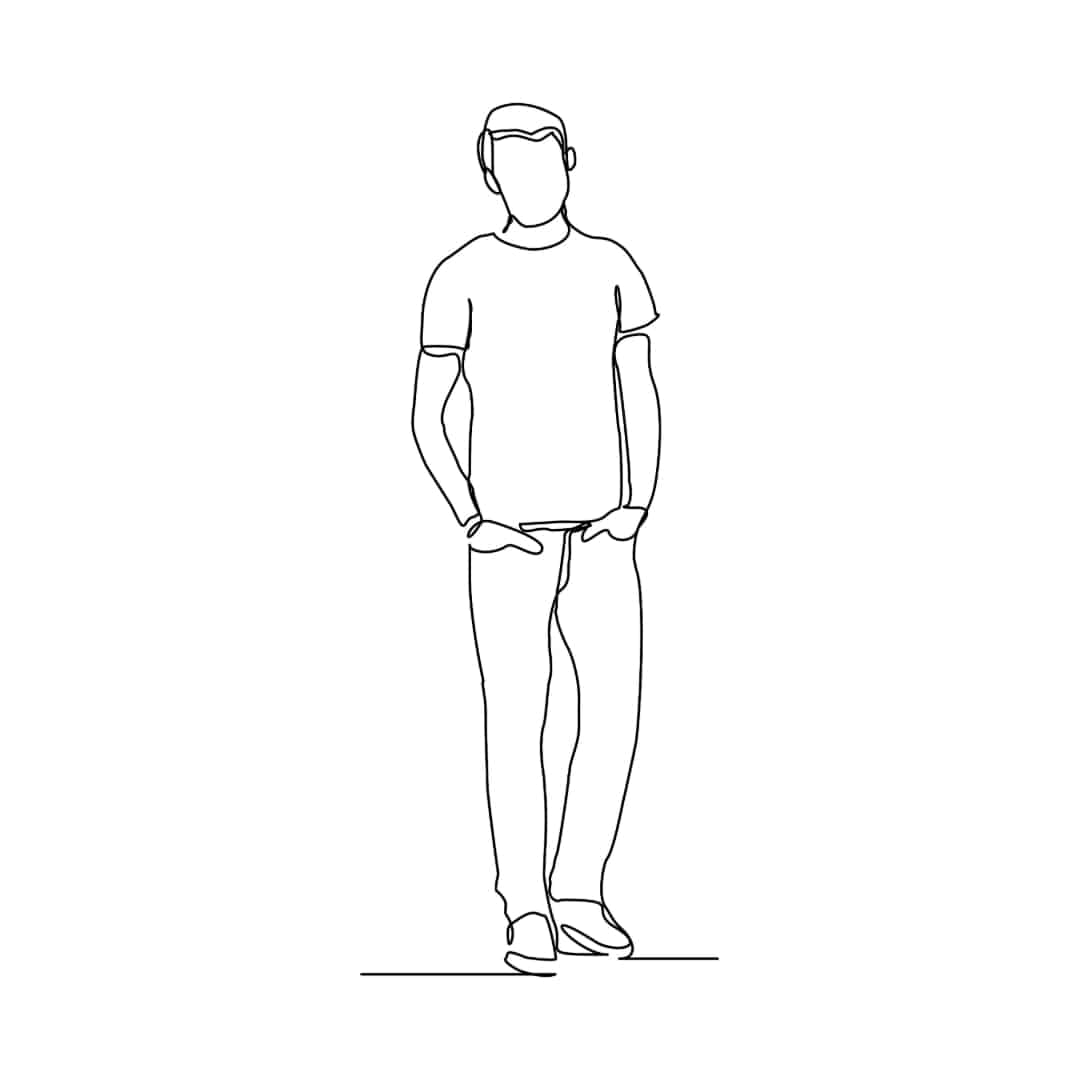Plenty of people understand the impact and extent of mental illness in the United States. The wide range of awareness campaigns during the last few decades has done a lot of great work for people experiencing these struggles. However, there are still aspects of mental illness that are given far less attention.
Self-injury is one of these. Some think of self-injury as a problem mainly among adolescents and teenagers dealing with difficult emotions during puberty. Studies show that approximately 15% of teens report some form of self-inflicted harm. However, thousands of adults report self-injury as well. An estimated 17-35% of college students and 4% of all adults disclose self-harm behaviors as well.
Self-Injury Awareness Day is coming up on March 1st. This global event exists to raise awareness for those suffering in silence beneath the weight of self-injury. Those who have no experience with self-injury often (and understandably) have a difficult time making sense of it. But the false assumptions surrounding the issue only make it harder to overcome.
Self-Injury Awareness is a time to learn about the different ways people can find help and healing for their self-harm behaviors. For example, dialectical behavior therapy is a crucial tool for working with people who self-injure. It teaches vital skills that enable people to manage their emotions and overcome their dangerous behaviors.
Understanding Self-Injury
Self-injury is intentional self-inflicted harm done without suicidal intention. It includes things like cutting or burning their skin, hitting body parts, or punching objects. Any form of behavior intended to cause pain without trying to end their life qualifies as self-injury.
People self-injure for many different reasons, usually regardless of race or socioeconomic status. Individuals in gender and sexual minorities tend to express higher rates of self-injury than their straight, cisgender peers. Young people who are victims of bullying or other social rejection from peers are also more likely to self-injure.
Those who struggle with self-injury report higher rates of depression, hopelessness, and disassociation. Many see self-injury as a way to take back control when they cannot regulate their emotions or manage other external forces. However, these behaviors only offer temporary relief. Over time, they exacerbate the underlying problem if left untreated.
Dialectical Behavior Therapy for Self-Injury
Dialectical behavior therapy (DBT) is a primary treatment modality used with individuals struggling with self-injury. It is one of the most effective forms of therapy for people who engage in high-risk behaviors, such as self-harm, substance abuse, or suicidal ideation. Originally developed for individuals with borderline personality disorder, DBT is a crucial tool for anyone living with a dangerous mental health disorder.
DBT centers around equipping people with four core skills:
- Emotional Regulation: Managing emotions, including changing unhelpful or harmful emotions, and replacing them with positive emotions
- Distress Tolerance: Dealing with difficult experiences, coping with emotional pain, and developing confidence and resilience
- Interpersonal Effectiveness: Building stronger relationships with others by asking to have needs met, learning to say no, and handling conflict
- Mindfulness: Becoming aware of thoughts, feelings, and emotions and observing self without attachment or judgment
Each of these skills is useful for dealing with the emotional challenges of high-risk mental illness. Incorporating them makes it easier to cope with life without having to turn to harmful behaviors like self-injury.
DBT TIPP Technique
DBT core skills are concepts to work towards. They aren’t achieved all at once; it takes time to reach these important markers for mental health management. As Julia Wilson, LMFT and Director of Outpatient Services at Smoky Mountain Lodge, explains, “Learning DBT is a lot like learning a second language. You have to immerse yourself in the practice every day, so it becomes second nature to use it when you need it.”
DBT TIPP techniques are four practical ways to tolerate distress when it arises. While DBT core skills are concepts to work towards, TIPP techniques are some of the specific actions taken to achieve them. TIPP is an acronym that stands for the four steps: temperature, intense exercise, paced breathing, and progressive muscle relaxation.
Temperature
Temperature refers to changing body temperature. Cooler temperatures are helpful when someone feels emotionally overwhelmed because they decrease elevated heart rate. Higher temperatures are useful when depressed or sad because they raise a lowered heart rate. Changing to a cooler temperature can mean splashing the face with cold water, taking a cool shower, or going for a walk outside if the weather is chilly. Shifting to warmer temperatures involves activities like taking a hot bath, drinking a mug of warm tea, cuddling up in a blanket, or heading outside on a sunny day.
Intense Exercise
Exercise is useful for managing overwhelming emotions, both positive and negative. It doesn’t have to be intense sprints or heavy weightlifting; simply getting up and going for a walk, bike ride, swim, or even doing jumping jacks, can work wonders for regaining emotional balance. All it takes is 15-30 minutes of movement to work off some of those intense emotions.
Paced Breathing
Paced breathing, or controlled breathing, involves managing your breath. This helps reduce overwhelming psychosomatic symptoms, such as increased heart rate, sweating, or flushed face). There are many ways to pace breathing. One example is to inhale deeply for four seconds and then exhale for six seconds, repeating the process over a few minutes.
Progressive Muscle Relaxation
Progressive muscle relaxation means releasing the tension built up in the muscles. Intense emotions often cause muscles to tense up throughout the body. Using progressive muscle relaxation is a way to relieve that built-up tension and reduce troubling emotions. It involves intentionally tensing up muscles for five seconds and then releasing the tension. The best way to practice progressive muscle relaxation is one muscle group at a time, starting from the head and moving down to the toes.
Implementing DBT TIPP Techniques
DBT TIPP techniques will not come naturally at first. Anyone who uses self-injury to cope will struggle to implement these practices immediately. However, the effort it takes to incorporate them is well worth the benefits they provide. TIPP techniques are far more effective and healthy ways of handling overwhelming or negative emotions that arise.
Julia offered some suggestions for incorporating TIPP techniques to cope with self-injury:
- “It is important to have the TIPP skill memorized, as well as the personal actions you will do while using TIPP, this way when you are in crisis you don’t have to overthink or scramble to figure out what to do.”
- “Having a quick reference card in your pocket or bag can be helpful. It may read like ‘Change the temperature of my face and hands, take a quick run around the block, remember to use square breathing and tense/relax my shoulders while I do it.’”
- “If you really want to get creative, you can save a TIPP Skill graphic as your home screen on your phone for a quick reference.”
If you’ve struggled with self-injury and other harmful behaviors for a long time, implementing TIPP techniques on your own may be difficult. You might want to reach out to a professional mental health treatment program for support and assistance during the process. While you may feel like you have to manage your condition alone, that couldn’t be further from the truth.
Pasadena Villa is a mental health treatment network that helps people suffering from mental illness and other disorders. We offer specialized programs built around your needs to provide the solution and care you need. Using our specialized Social Integration Model, we work with you to build a strong internal foundation so you can reintegrate into a happy, fulfilling life.
To learn more about the programs available at Pasadena Villa, please reach out to us. Our kind, knowledgeable admissions team will be happy to hear from and help you. We’ll outline your options and work with you to determine which is the best fit. Give us a call today to learn more about how we can help you on the path to wellness and recovery!



